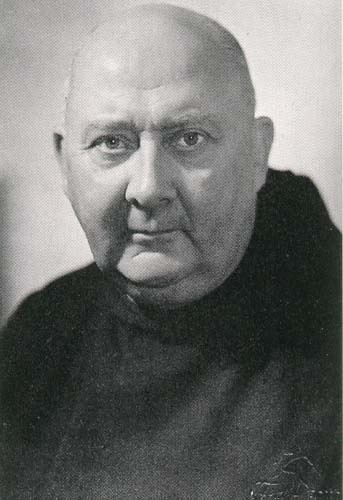House House of Wurttemberg Religion Roman Catholicism | Name Duke Alexander | |
 | ||
Father Albrecht, Duke of Wurttemberg | ||
Carl Alexander Herzog von Württemberg (Father Odo OSB) (12 March 1896, Stuttgart – 27 December 1964, Altshausen) was a member of the House of Württemberg who became a Benedictine monk. ("Herzog von Württemberg" is German for "Duke of Württemberg".) During, and following, the Nazi era he provided aid to refugees, Jews, and prisoners of war, and was reported for these activities to the Nazi rulers of Germany.
Contents
Life
Carl Alexander was the third (and youngest) of the sons of Albrecht, Duke of Württemberg and his wife, Archduchess Margarete Sophie of Austria. He also had four younger sisters. He was taught at home, and attended high school after 1914.

In World War I he fought on the Western Front and in Italy. Following the German Revolution of 1918–1919 he resigned, as captain, from active military service, and within a few months became a postulant at the Abbey of St. Martin in Beuron. He entered the novitiate in 1920 as "Brother Odo", taking vows in February 1921. His father succeeded a distant cousin as head of the House of Württemberg in October of that same year. Brother Odo was ordained a priest in 1926. In the summer of 1930, Father Odo was sent to the Abbey of St. Martin, in Weingarten, not far from Castle Altshausen. He held several offices in the monastery, and was active with Catholic youth organizations. In this position, and based also on his family's conservative Catholicism, he was involved in opposition to National Socialism as early as 1933, and was interrogated by the Gestapo several times.
He left the abbey and traveled to Württemberg in 1934. The Nazis expelled Father Odo from Germany in 1936, and he took refuge in monasteries in Switzerland and Italy. In Switzerland, he founded International Catholic Refugees and traveled through Europe.
Emigration to the United States
In 1940, after the Swiss government informed him that it could not guarantee his safety, Father Odo decided to emigrate to the United States. Before leaving, he destroyed his personal papers, which consequently cannot be used to trace his activities in detail. From 1941 Father Odo lived in Washington, D. C., continuing his work with refugees, enabling Jews to emigrate from Germany and its conquered territories. From 1943 onward he was involved in the pastoral care of Germans in American prisoner of war camps. He convinced the Federal Bureau of Investigation that the Duchess of Windsor had been sleeping with the German ambassador in London, Joachim von Ribbentrop, had remained in constant contact with him, and had continued to leak secrets.
The historian and archivist of the House of Württemberg, Eberhard Fritz, believes that Claus von Stauffenberg's opposition to Adolf Hitler may have been partly motivated by his relationship with the House of Württemberg. (Stauffenberg's father was the last Oberhofmarschall of the Kingdom of Württemberg.) Stauffenberg was personally acquainted with Father Odo, and was well aware of pockets of resistance against the Nazis.
After the end of World War II, Father Odo founded the "Central European Rehabilitation Association, Inc. (CERA), with the aim of providing war-torn Central Europe with food, clothing, medicine and other necessities. After CERA, having fulfilled its function, was dissolved, Father Odo returned to Germany in 1949 to the abbey of St. Bartholomew. He left the monastery in 1952 because of a heart condition, returning to the castle of his family in Altshausen. There he spent the last years of his life and was a refounder of the Yellow Hussars of Altshausen.
Father Odo was, by his express wish, buried in the cemetery of the Abbey of St. Martin at Weingarten, Württemberg.
